Even the most pessimistic St. Louis Blues fan, trained to expect the worst by over 50 years of disappointment, could never have seen this coming. With December fast approaching, the Blues are 8-11-3 – last in their division and 30th in the entire league. Though they missed the playoffs last season, general manager Doug Armstrong took action, and built a team that was expected to succeed; however, so far, they’ve done anything but.
The early-season failures reached their boiling point on Nov. 19, when, after a 2-0 loss to the Los Angeles Kings, Armstrong decided to fire head coach Mike Yeo and replace him with Craig Berube. Since then, the Blues are 1-2-0, and though the win was one of their best of the season, each of the losses was a considerable embarrassment.
What is Armstrong to do to salvage the season if a coaching change isn’t the fix? Perhaps he’s left with an extreme option: the statement trade. Let’s take a look at what that might look like, and whether it’s a good idea for the Blues.
What is a Statement Trade?
In the NHL, trades are made for a number of different reasons. The most typical and simplest reason is that two teams are looking to improve, and each believes the other can help them do so at a fair price. This is what’s typically described as a “hockey trade,” where both teams are trying to improve in the here-and-now. Max Domi, who currently has 26 points, was acquired by the Montreal Canadiens in just such a “hockey trade,” in exchange for Alex Galchenyuk.
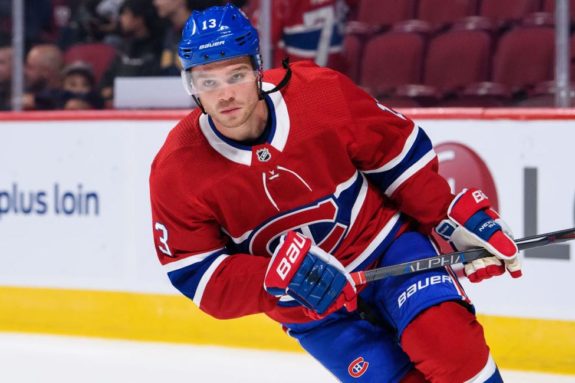
Other trades are done for rebuilding purposes (like when the Ottawa Senators traded Erik Karlsson). These happen when one team believes they aren’t headed in the right direction, and wants to build for the future. Often these trades happen at the trade deadline, when a non-contending team trades a rental player with an expiring contract to a team in the playoff hunt.
Statement trades are closest to a hockey trade, though they often come when a team seems to be in rebuilding conditions. A team like the Blues that is looking for a serious shakeup may consider making a statement trade. It is essentially a “hockey trade,” in that they are trying to improve the team immediately, but it is different in that the team may consider trading a player they otherwise would not.
As of Sunday night, all three of the other teams that had fired coaches had made a significant trade as well. A few games after firing head coach John Stevens, the Los Angeles Kings traded Tanner Pearson, once considered an integral part of their young core, for Carl Hagelin. Shortly before moving on from Todd McClellan, the Edmonton Oilers traded Ryan Strome, a former fifth overall pick, for Ryan Spooner. And Sunday night, several weeks after firing Joel Quenneville, the Chicago Blackhawks moved Nick Schmaltz to Arizona in exchange for Brendan Perlini and Dylan Strome.
All three of these trades could be described as making a statement. Each one involved a young player with several years of control left that likely would not have been available had the team been performing well. They make a statement to the locker room by trading a key player and shaking up locker room chemistry. It is exactly the sort of model the Blues might look to follow.
Would the Blues Consider a Statement?
Of course, the fact that other teams have made such trades doesn’t necessarily mean that Armstrong would do so, but recently, there’s been evidence that he might. In the press conference where he introduced Berube to the media, Armstrong spoke extensively about his growing displeasure with the team’s “core.”
He was asked about holding the players accountable for the team’s failures. His response was simple: “We’ve stayed patient with a core group of players, and that patience is now at its thinnest.” He later said “our best players need to be our best players,” and when asked to evaluate his leadership group (which he clarified extended beyond those players that wore letters on their sweaters), he responded, “well, obviously [I’d grade them] below average.”
These messages, though short, were a not-so-subtle hint that change could be coming to the roster if the team didn’t turn things around quickly. And so far, they haven’t. The Blues are fast running out of time to make such changes.
Who Might Be in Danger?
The Blues have a number of players who could be candidates for such a trade. Let’s first consider who is not.
Ryan O’Reilly is certainly safe. He’s one of the Blues’ newest players, acquired in a blockbuster deal with the Buffalo Sabres, and he hasn’t stopped scoring since arriving in St. Louis. Along the same lines, Tyler Bozak and David Perron are probably in the clear, having signed long contracts with the Blues in free agency. (Chad Johnson and Pat Maroon signed one-year contracts, so while they might be traded, they would not be considered “statement” trades).
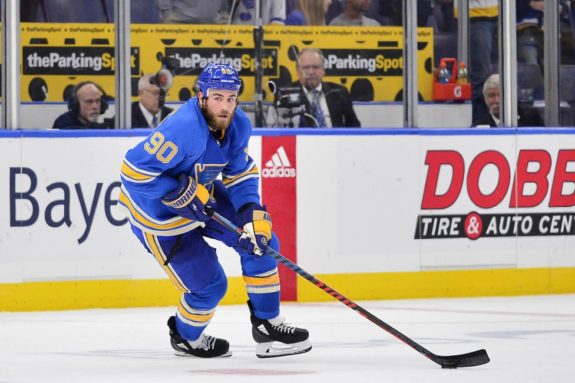
Robert Thomas, the Blues’ breakout rookie, is certainly above reproach as well, and perhaps is the Blues’ most untouchable player. Vince Dunn is also young and up-and-coming. And then there are other players who are safe by attrition: Jay Bouwmeester can’t be traded with his contract and his play of late. Carl Gunnarsson and Robert Bortuzzo are both hurt (and probably worth more to St. Louis than anyone else even when healthy), and younger, fringe players like Oskar Sundqvist, Zach Sanford, Ivan Barbashev, and Jordan Schmaltz wouldn’t net much in a trade even if the Blues were interested.
This leaves a core group of eight or nine players to be considered. Robby Fabbri is returning from injury, and had been out so long, he could hardly be considered part of the established core. The rest warrant some consideration.
Jake Allen
The Blues’ embattled netminder is always at the center of some conversation. He’s played well of late, which may be the Blues’ best chance, if they want to trade him. Given his contract, he likely will fetch little, but perhaps right now a team would take him as part of a package for a rental replacement (whom the Blues could then extend).
Joel Edmundson
It’s unlikely the Blues would trade Joel Edmundson, as he’s too valuable to them. He’s far-and-away their best left-handed defenseman, and one of the few defenders who hasn’t gone through significant lapses in performance during the year.
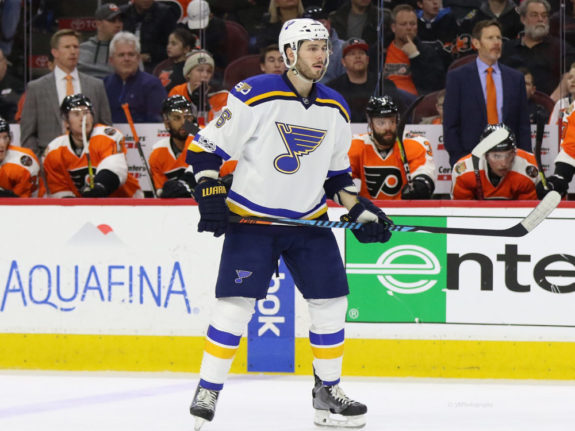
With that said, the Blues only signed Edmundson to a one-year contract this summer, so perhaps they foresee an issue there. If that’s the case, Edmundson could be part of a decent hockey trade, but they’d be hard pressed to replace him on the defensive end.
Colton Parayko
Parayko is a stalwart young defenseman on the right side on a great contract. But he hasn’t blossomed as well as perhaps the Blues had hoped after an incredible start in his rookie season. With that great contract and size, though, Parayko is exactly the kind of player they could potentially move in a statement deal, and now might be the time for that to happen, as he’s been linked before in rumors to William Nylander and the Maple Leafs.
Alex Pietrangelo
It might be the biggest statement the Blues could make, but it wouldn’t be the smartest. Pietrangelo is the team captain, and therefore at the head of the leadership group which Armstrong described as “obviously below average.” But there’s just no replacing his minutes (he’s averaged almost 25 a night in his career).
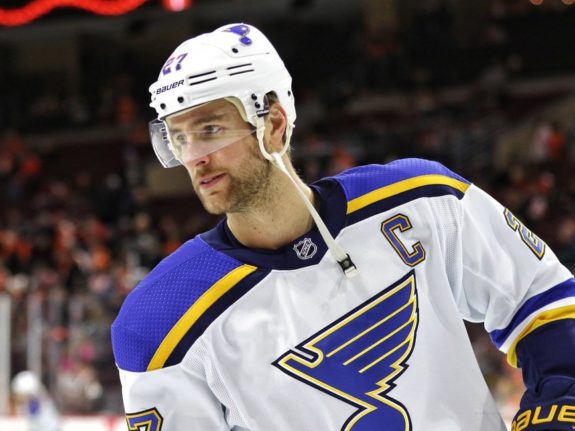
If Pietrangelo were to be traded, it would most likely have to be in a deal that included a right-handed defenseman who could play 20-plus minutes a night. It would certainly be a statement to trade the captain, but the Blues would have to think long and hard about whether Pietrangelo is really the problem before going that route.
Brayden Schenn
Now we get to the players that are most likely to be involved in this kind of statement trade. Brayden Schenn has been great for the Blues since coming over in a trade at last year’s draft. He broke out with 70 points in his first year in town, and has continued to play well this year.
Schenn’s problem is his contract. In this case, he has a very good contract, with this and next year remaining at $5 million. But the Blues already have three centers in-house beyond next year (O’Reilly, Thomas, and Bozak), and none of them really fit on a fourth line. Schenn thrived when returned to center with the Blues last year, and if he wants to play there going forward (he probably will, as there’s more money in it) there may not be space on the Blues.
So it comes down to whether Armstrong thinks Schenn is an integral part of the Blues’ future or not. If he isn’t, Schenn could get the Blues a serious return with a year and a half left on his deal. Armstrong could look to act fast if he doesn’t plan to re-sign Schenn after next year.
Jaden Schwartz
Jaden Schwartz is an interesting player. He’s been described as the straw that stirs the Blues’ drink, and there’s plenty of evidence to support that. The Blues’ collapse last season coincides pretty significantly with losing Schwartz for several months to injury. And this season, Schwartz hasn’t really gotten going (having been injured twice), and neither have the Blues.
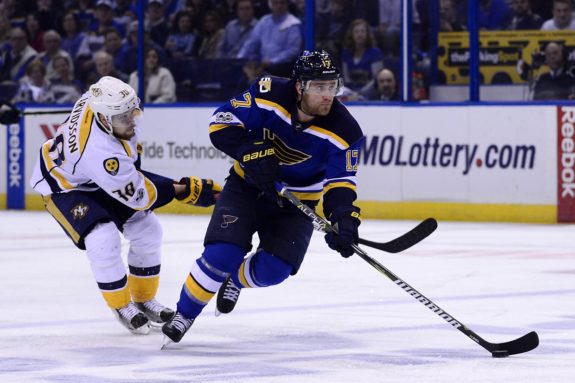
With that said, Schwartz is a perfect player for this kind of trade. He’s been part of the Blues for a long time, would command an incredible return, and would certainly send a message to the team’s locker room. Schwartz was voted by the NHLPA last season as one of the most underrated players in the league, so other teams should be aware of his value. If the Blues are going to make a statement without sacrificing a top-tier player like Pietrangelo or Vladimir Tarasenko, Schwartz may be a prime candidate.
Alex Steen
Alex Steen is one of the team’s true veterans, and is considered a leader in the locker room (and on the ice, as he wears an ‘A’). He’s struggled with injury this season, but has managed ten points in the sixteen games he’s played, and hasn’t looked too bad overall. At 34, Steen may offer the Blues more value than he does another team, given his history with the club and its players.
It’s probably a moot point, anyway, as Steen’s contract probably cannot be traded. He’s approaching 35, struggling with some injuries, and has three years remaining on his deal at $5.75 million. In addition, he has a no-trade clause, so he’d have to approve any move the Blues might be able to make, anyway. He’s likely here for the long haul.
Vladimir Tarasenko
Finally, there’s the big fish. Vladimir Tarasenko is the Blues’ star, with four seasons of 33 or more goals and one season of 40. He’s got five years left on his current deal, with a $7.5 million cap hit that no one will find objectionable. He seems to love the city and wants to thrive here, and he’s the most dynamic forward (if not the most consistent) that the Blues have.
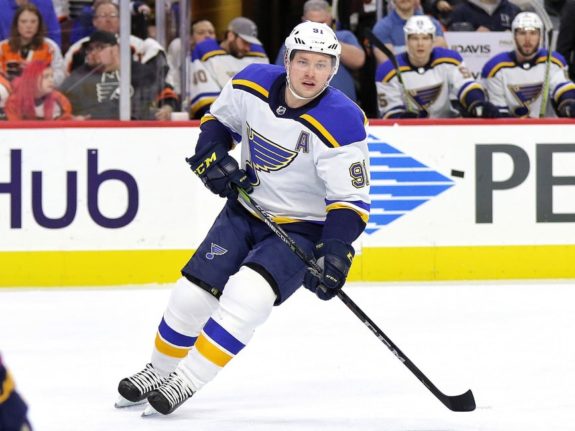
So why would Armstrong ever consider such a player? Well, according to Elliotte Friedman in his weekly “31 Thoughts” article, the Blues may be frustrated with Tarasenko. If they are, it’s likely due to his streakiness. He’s a player that scores goals in bunches, but that comes with lengthy droughts, like the 10-game goalless streak that ended with his goal against Winnipeg on Saturday.
If the Blues decided to trade Tarasenko, it would be an absolute blockbuster, and it is hard to even imagine what the return in such a trade might be. But Friedman warns well of the potential pitfalls. He says: “The Blues have to know it’s a hard trade to win, because you’re giving up a great talent.”
But Friedman makes one more point, which explains why the Blues might consider trading Tarasenko if they truly are at their wit’s end: “There’s no bigger change they could make, if they wanted to.”
What Are the Chances?
With the Schmaltz trade just now breaking, the Blues are once again in a tough position compared with the rest of the league. Fans are itching for a change, and they look around the league at other struggling teams and see that they’re making trades while they make coaching changes. Armstrong hinted that he’s fed up with his core’s performance, but he hasn’t yet backed that up with words.
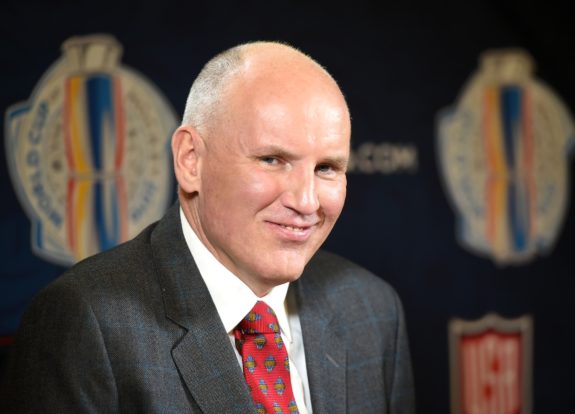
The time may be soon. The Blues’ chance of salvaging this season is evaporating very quickly. They’ve already made the coaching change, and it hasn’t yet affected different results. It is time to start questioning whether this core is capable of taking the Blues where they need to go, and if that answer is no, then they need to make a clear statement.